Chapter 2 • Add, subtract, multiply, and divide whole numbers • Add, subtract, multiply, and divide fractions and reduce fractions to the lowest terms • Add, subtract, multiply, and divide mixed numbers and reduce to the lowest terms • Add, subtract, multiply, and divide decimals and round them to a specific number place value • Convert fractions to decimal fractions • Convert among fractions, decimals, and percentages • Express numbers in ratio and proportion and solve for unknowns If you said the numerator is 5 and the denominator is 6, you are correct. If a patient has 25 tablets in a prescription and takes 13 tablets, what is the fractional use? Answer:
Review of Basic Mathematical Skills
Fractions
What Is a Fraction?

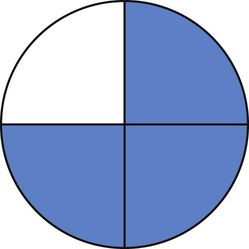

 or
or  . (When
. (When  is divided by 10 in both the numerator and the denominator, the result is
is divided by 10 in both the numerator and the denominator, the result is  .)
.)

Review of Basic Mathematical Skills



 = __________
= __________ = __________
= __________ = __________
= __________ = __________
= __________ = __________
= __________ = __________
= __________ = __________
= __________ = __________
= __________ = __________
= __________ = __________
= __________ = __________
= __________ = __________
= __________ = __________
= __________ = __________
= __________ = __________
= __________ = __________
= __________ = __________
= __________ = __________
= __________ inches long. The physician asks you to be sure the person has sufficient amount to apply bandages daily for 2 weeks using approximately
inches long. The physician asks you to be sure the person has sufficient amount to apply bandages daily for 2 weeks using approximately  yards per bandage. How many rolls of adhesive should you be sure the patient buys?
yards per bandage. How many rolls of adhesive should you be sure the patient buys? cups of water. How many milliliters would be in
cups of water. How many milliliters would be in  of the solution?
of the solution? __________
__________ __________
__________ __________
__________ __________
__________ __________
__________ __________
__________ __________
__________ __________
__________ __________
__________ __________
__________ ; all the numbers in this example contain whole numbers, but they are not evenly divisible and may have decimal remainders.
; all the numbers in this example contain whole numbers, but they are not evenly divisible and may have decimal remainders.
 .
.

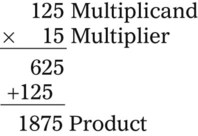
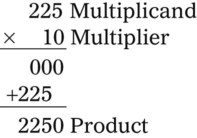
 .” The number being divided is called the dividend, and the number used to divide is the divisor. The result of the division is the quotient.
.” The number being divided is called the dividend, and the number used to divide is the divisor. The result of the division is the quotient.



 = __________
= __________ = __________
= __________ =
= =
= = __________
= __________ = __________
= __________ = __________
= __________ .
. you are correct.
you are correct.




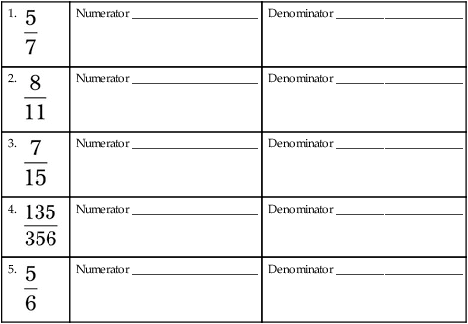
 is written, the fraction actually means 2 ÷ 3. The following illustrates this in pharmaceutical terms:
is written, the fraction actually means 2 ÷ 3. The following illustrates this in pharmaceutical terms:
 and
and  . An improper fraction is one in which the numerator is equal to or greater than the denominator, making the fraction a number of one or more such as
. An improper fraction is one in which the numerator is equal to or greater than the denominator, making the fraction a number of one or more such as  or
or  and
and  or 2. If the numerator and denominator are the same, the number becomes 1, such as
or 2. If the numerator and denominator are the same, the number becomes 1, such as  or
or  . An improper fraction may be written as a mixed number (a whole number and a fraction) or as an improper fraction (a fraction that has a numerator equal to or greater than the denominator). To change an improper fraction to a mixed number, the numerator is divided by the denominator and any remainder is written over the denominator, such as
. An improper fraction may be written as a mixed number (a whole number and a fraction) or as an improper fraction (a fraction that has a numerator equal to or greater than the denominator). To change an improper fraction to a mixed number, the numerator is divided by the denominator and any remainder is written over the denominator, such as  (an improper fraction) =
(an improper fraction) =  (a mixed number). (When 43 is divided by 8, the answer is 5 with a remainder of 3, so
(a mixed number). (When 43 is divided by 8, the answer is 5 with a remainder of 3, so  as a mixed number is
as a mixed number is  .) The remainder is the amount that is left over after the whole number has been divided into the numerator the maximum number of times (in this problem, 3 is the remainder that now is seen as
.) The remainder is the amount that is left over after the whole number has been divided into the numerator the maximum number of times (in this problem, 3 is the remainder that now is seen as  ). An improper fraction should always be reduced to a mixed number after calculations have been completed.
). An improper fraction should always be reduced to a mixed number after calculations have been completed. and
and  . To change a mixed number to an improper fraction, multiply the whole number by the denominator and add the amount found in the numerator (e.g.,
. To change a mixed number to an improper fraction, multiply the whole number by the denominator and add the amount found in the numerator (e.g.,  actually means that 4 is multiplied by 8 to provide the whole number of 32 and the 1 found in the numerator of the fraction is added to the total, or 32 + 1 = 33). The denominator remains the number found as the denominator of the mixed number, or
actually means that 4 is multiplied by 8 to provide the whole number of 32 and the 1 found in the numerator of the fraction is added to the total, or 32 + 1 = 33). The denominator remains the number found as the denominator of the mixed number, or  =
=  . Another example of changing a mixed number to an improper fraction is
. Another example of changing a mixed number to an improper fraction is  : 2 × 3 + 2 with the same denominator of 3 or
: 2 × 3 + 2 with the same denominator of 3 or  .
. = __________
= __________ = __________
= __________ = __________
= __________ = __________
= __________ = __________
= __________ = __________
= __________ = __________
= __________ = __________
= __________ = __________
= __________ = __________
= __________ = __________
= __________ = __________
= __________ = __________
= __________ = __________
= __________ = __________
= __________ = __________
= __________ = __________
= __________ = __________
= __________ = __________
= __________ = __________
= __________ = __________
= __________ = __________
= __________ = __________
= __________ = __________
= __________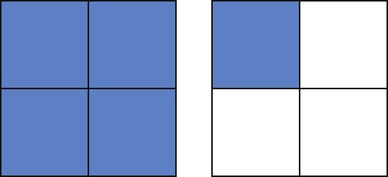



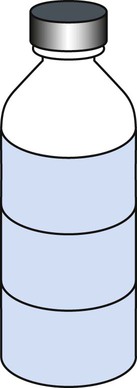

 of a tablet. Fill in the following tablet to show this fraction.
of a tablet. Fill in the following tablet to show this fraction.
 of a glass of water. On the glass, show
of a glass of water. On the glass, show  of the glass of water.
of the glass of water.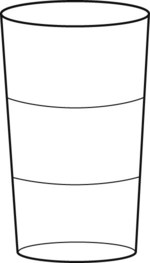
 tablets four times a day. The prescription drug is in whole tablets. Show what the customer should do.
tablets four times a day. The prescription drug is in whole tablets. Show what the customer should do.
 of a medicine dropper of medication. Indicate on the medicine dropper what you would show the customer as a dose.
of a medicine dropper of medication. Indicate on the medicine dropper what you would show the customer as a dose.
 could be
could be  ,
,  , or even
, or even  . For example, with
. For example, with  , the numerator and denominator can both be divided by 2 to give
, the numerator and denominator can both be divided by 2 to give  ; or with
; or with  , both parts of the fraction can be divided by 3 for
, both parts of the fraction can be divided by 3 for  ; finally, with
; finally, with  , both components of the fraction can be divided by 50 for
, both components of the fraction can be divided by 50 for  . Each of these fractions is actually one half of the total number of equivalent parts of a whole.
. Each of these fractions is actually one half of the total number of equivalent parts of a whole. = 6.
= 6. can be reduced by dividing by 2 [2 ÷ 2 = 1 and 4 ÷ 2 = 2] =
can be reduced by dividing by 2 [2 ÷ 2 = 1 and 4 ÷ 2 = 2] =  , or
, or  can be reduced by 3 [3 ÷ 3 = 1 and 6 ÷ 3 = 2] to =
can be reduced by 3 [3 ÷ 3 = 1 and 6 ÷ 3 = 2] to =  ). In each case the reduced fraction contains the same amount of space in each whole. The difference is that the number of divided pieces of the whole has changed. The fractions are comparable, although the actual numerators and denominators have been altered by division with a number that is common to both parts of the fraction. This is dividing by a common factor of the numerator and denominator (e.g., with the fraction
). In each case the reduced fraction contains the same amount of space in each whole. The difference is that the number of divided pieces of the whole has changed. The fractions are comparable, although the actual numerators and denominators have been altered by division with a number that is common to both parts of the fraction. This is dividing by a common factor of the numerator and denominator (e.g., with the fraction  , both the numerator and denominator can be divided by 5, so the fraction can be reduced to
, both the numerator and denominator can be divided by 5, so the fraction can be reduced to  ).
). = __________
= __________ = __________
= __________ = __________
= __________ = __________
= __________ = __________
= __________ = __________
= __________ = __________
= __________ = __________
= __________ =
= =
= =
= =
= =
= =
= =
= =
= =
= =
= =
= =
=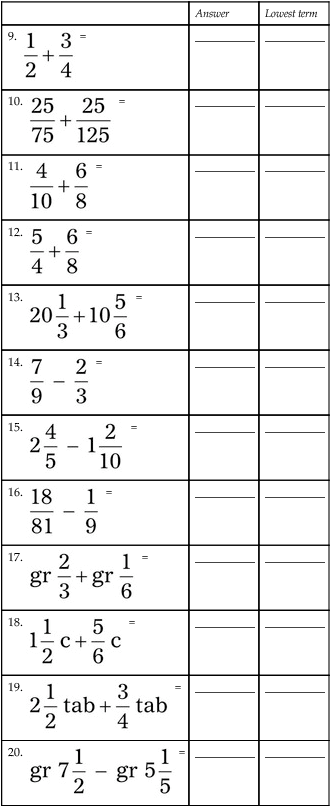
 +
+  can be added by adding the numerators, or 3 and 1 [3 + 1] and placing the answer over the denominator of 5. This provides an answer of
can be added by adding the numerators, or 3 and 1 [3 + 1] and placing the answer over the denominator of 5. This provides an answer of  . To subtract
. To subtract  −
−  , subtract 1 from 3 [3 – 1]/5 for an answer of
, subtract 1 from 3 [3 – 1]/5 for an answer of  ).
). +
+  could easily be found because 15 is divisible by 5. To change
could easily be found because 15 is divisible by 5. To change  to the common denominator, divide the denominator 5 into the denominator 15 (3); then multiply the 3 (numerator) times 3 to calculate
to the common denominator, divide the denominator 5 into the denominator 15 (3); then multiply the 3 (numerator) times 3 to calculate  . Therefore
. Therefore  +
+  would provide an answer of
would provide an answer of  .
. ,
,  ,
,  , 1, and so on to estimate the answer with any calculations with fractions. Estimate either slightly larger or slightly smaller numbers. Remember that this is an estimate not a specific answer. It is for comparison for your exact answer.
, 1, and so on to estimate the answer with any calculations with fractions. Estimate either slightly larger or slightly smaller numbers. Remember that this is an estimate not a specific answer. It is for comparison for your exact answer. +
+  , the lowest common denominator is 15. The problem with the common denominator is
, the lowest common denominator is 15. The problem with the common denominator is  (15 ÷ 5 = 3; 3 × 3 = 9; so
(15 ÷ 5 = 3; 3 × 3 = 9; so  =
=  ) +
) +  =
=  .
.


